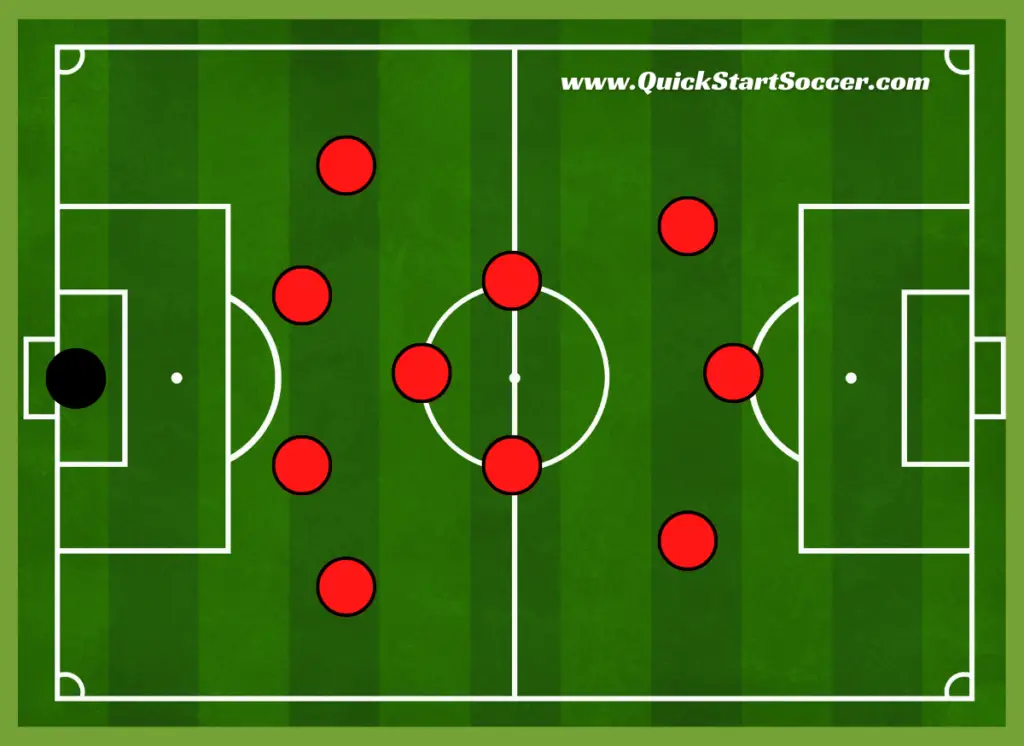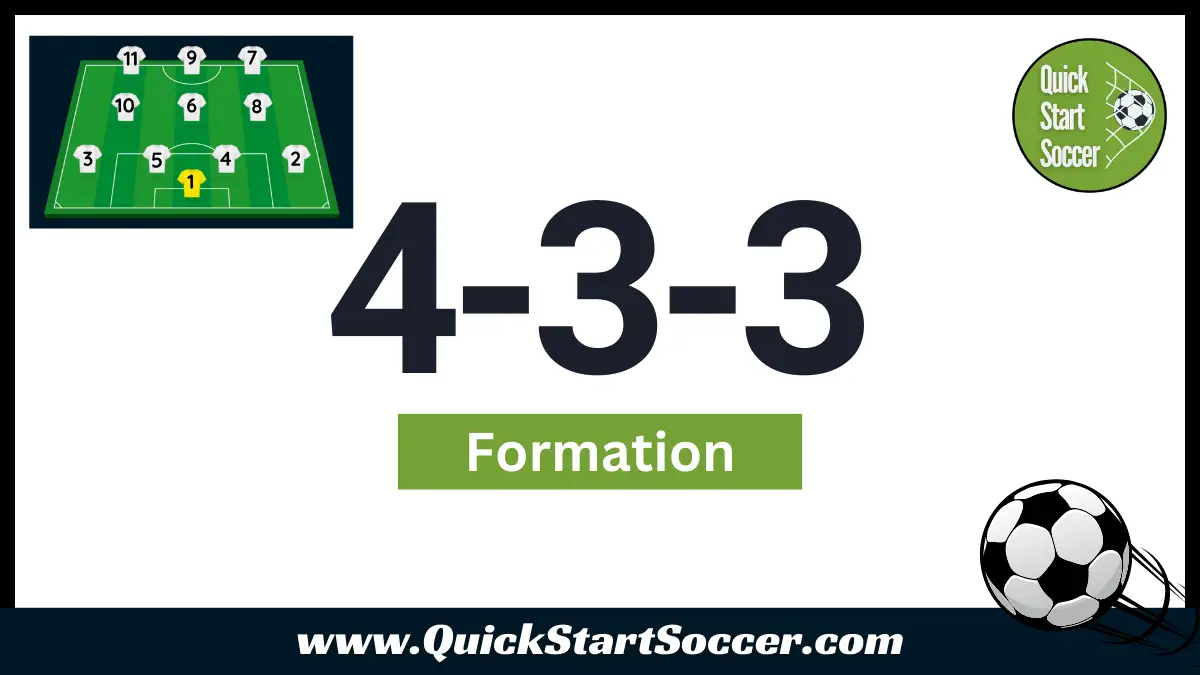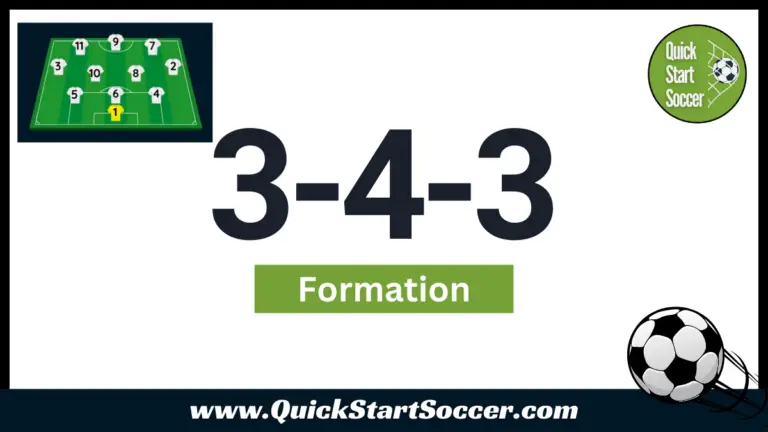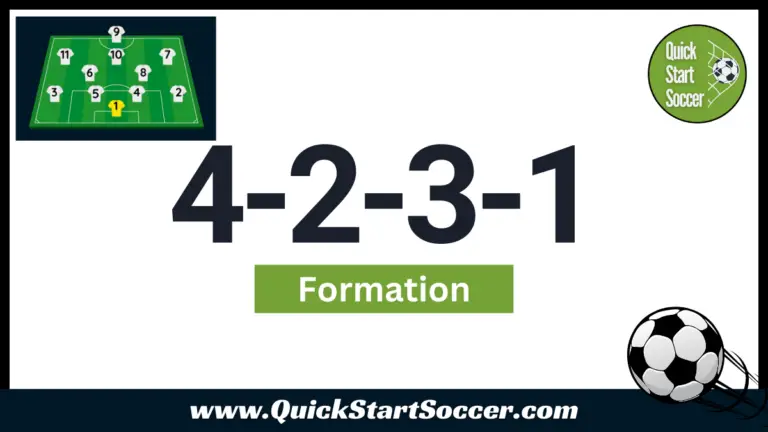4-3-3 Formation Explained | Tactics, Strengths, And Weaknesses
The 4-3-3 is undoubtedly the most popular soccer formation used in the modern game. It is also one of the few formations that seem to be as effective at the youth level as it is at the professional one. Although each system in soccer has its own strengths and weaknesses, the 4-3-3 appears to be the formation of choice for many coaches, regardless of their experience or level of play. In this article, we will explore the 4-3-3 in detail. We will answer the question of why the 4-3-3 soccer formation is so popular and discuss the strengths and weaknesses associated with using it. We’ll also show you the best formation you can use to beat the 4-3-3. Finally, we will look at some of the best professional teams that have played the 4-3-3 in recent times. To get things going, let’s have a look at what the 4-3-3 soccer formation actually is.
What Is The 4-3-3 Formation In Soccer?

The 4-3-3 soccer formation is made up of 3 distinctive lines or units. Ahead of the goalkeeper, the formation uses a traditional back 4, which consists of two central defenders and a left and right full-back. The midfield unit comprises three central midfielders who can line up in a number of ways. The most common shape is a midfield triangle with one central defensive midfielder and two more advanced midfielders on either side of them. The central defensive midfielder is sometimes referred to as a traditional number 6 or a single pivot.
Ahead of the midfielders, the formation has an attacking front 3. Usually, a lone striker (or number 9) is flanked by a left and right winger. Coaches may choose to adjust the setup by playing inverted wingers who work in the half spaces closer to the striker. They may also decide to play a false 9, who drops deep into midfield areas to help their team dominate possession. The flexibility that coaches have to adjust their midfield and front 3 (and even their defense) is one of the reasons why this formation is so popular.
Why Is The 4-3-3 Formation So Popular?
The 4-3-3 soccer formation is so popular due to the flexibility it offers coaches in and out of possession. Many coaches, in fact, adjust the formation according to the skillsets of their players and their preferred style of play. For instance, some coaches choose to play their wingers high and wide, giving their team attacking width in the final third. Other coaches choose to play their wingers narrow and closer to the striker and rely on their full-backs to provide width in attack.
A great example of two teams who play the 4-3-3 in very different ways is Jurgen Klopp’s Liverpool and Pep Guardiola’s Manchester City. Pep often used inverted full-backs to help his team dominate possession in midfield areas. His wingers stay high and wide to try and make the field as field as big as possible. In central midfield, he’ll play with two attacking number 10s who will join in attacks with the strikers and wingers to create an attacking front 5. In stark contrast, Jurgen Klopp’s Liverpool relied on their two full-backs to provide width and creativity in attacking areas. Their wingers play closer to the number 9 player and often look to operate in the areas in between the opposition central defender and full back. Their midfield three work together as a compact and energetic pressing unit, applying pressure to the ball in all areas of the field. Both teams are playing the 4-3-3 to great success, but they are both doing it very differently!
4-3-3 Formation Strengths And Weaknesses
Strengths
One of the main strengths of the 4-3-3 soccer formation is the balance and strength the formation offers in all areas of the field. The spine of the team consists of two center-backs, three central midfielders, and a striker. This strong spine means a team can confidently dominate possession in the field’s defensive, middle, and attacking thirds. Equally, with a full-back and winger on each side of the pitch, the team is well-balanced to provide attacking threats and defensive stability in wide areas.
For teams that want to dominate possession and build out from the back, the 4-3-3 formation helps the players create natural triangles and diamonds in between and within the three units of defense, midfield, and attack. These triangles and diamonds give the player on the ball multiple options to make short, easy passes to help their team successfully maintain possession.
Utilizing three central midfielders provides the opportunity to outnumber or at least match an opponent in the important central areas. A false 9 can tip the balance even further in a team’s favor if they are looking to achieve overloads and control the tempo of the game.
The 4-3-3 is a very attacking formation, which is another one of its key strengths. Regardless of whether a coach encourages their full-backs to join in the attacks or puts the emphasis on two of the central midfielders to join the front 3, a 4-3-3 playing team will often end up with a front line of 5 attacking players, which can be overwhelming for even the most experienced and organized defenses.
Defensively the 4-3-3 is also a strong soccer formation for teams that want to press high up the field. When opponents try to play out of the back, the formation allows the three forwards to work as a collective unit, putting pressure on the ball and providing cover and support. If teams are able to win the ball high up the field, the likelihood of creating chances upon regaining possession is significantly higher.
Weaknesses
One of the main weaknesses of the 4-3-3 soccer formation is that it can be extremely vulnerable to counter-attacking play. This is especially true when the 4-3-3 playing team’s full-backs push up high to join the attack. Counter-attacking teams can focus on the space the full-backs leave behind them and use pacy forwards to break quickly.
If teams choose to keep their wingers high and wide, there is also a danger of the lone striker becoming isolated while playing directly against two central defenders. As a consequence, the striker may struggle to get involved in the game, find space and get chances to score. For this reason, the 4-3-3 soccer formation, like many others, demands high-quality players in specialty positions. If you don’t possess a strong number 9 in your squad, the 4-3-3 soccer formation may not be the best one to utilize.
One further weakness of the 4-3-3 soccer formation is that the three midfielders can find themselves outnumbered in the middle of the park if an opponent chooses to play a diamond midfield or a 4-2-3-1. In both cases, the 4-3-3 playing team may struggle to maintain possession of the ball and control the tempo of the game.
What Is The Best Formation To Beat The 4-3-3?
The best formation to beat the 4-3-3 is the 4-2-3-1. In a 4-2-3-1 formation, teams can outnumber their opponents in the central midfield areas by having their attacking right and left midfielders drop in behind the striker. Essentially playing them in two free-roaming number 10 roles. In addition, the 4-2-3-1 playing team’s full-backs can join in attacks to pin their opposite numbers back. This can make it difficult for a 4-3-3 playing team to imprint their normal style on the game.
What Teams Use The 4-3-3-Soccer Formation?
With so many teams using the 4-3-3 soccer formation, it is not difficult to find examples of professional coaches who utilize it to great effect. That being said, some do it better than others. Below are two of the absolute best teams to have played the 4-3-3 formation.
Pep Guardiolas Barcelona
During his highly successful period as coach of Barcelona, Pep Guardiola led perhaps the most iconic 4-3-3 playing team of all time. Wingers Lionel Messi and Thierry Henry terrorized defensives on the wing whilst their midfield 3 of Xavi, Busquets, and Iniesta dominated possession as the team made ‘tiki-taka’ soccer a worldwide phenomenon.
Jurgen Klopps Liverpool
Jurgen Klopp’s heavy metal football has brought success back to Liverpool FC, and they are now one of the world’s most exciting teams to watch. Klopp utilizes incredibly aggressive attacking full-backs that play high up the pitch providing width and flair. His midfield and forward 3 have relentless energy and play a high-pressing game that suffocates defenses. It’s fast, it furious, and it’s fantastic to watch.
More Formation Guides
One of the things that makes soccer such a fascinating sport to watch, coach, and play, is the variety of tactics and formations that can be utilized to maximize a team’s chances of winning on the day. Before you go, be sure to check out some of our other formation guides below to see the strengths and weaknesses of each of these formations and how teams are using these to up their game.







